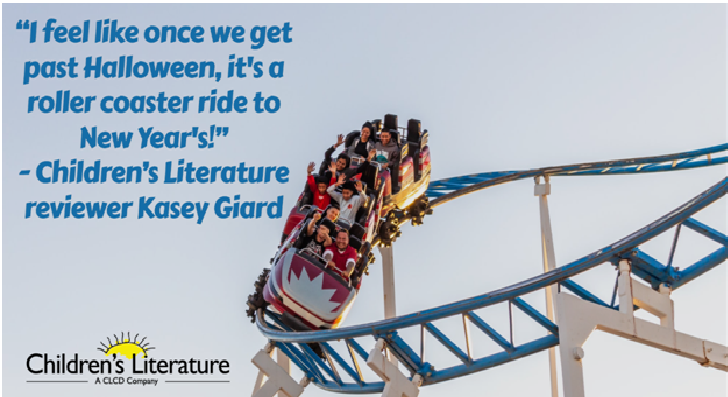
Who else feels like Kasey? Are you fastening in for the fast ride through the next few months? Autumn ushers in the official holiday season; before you even celebrate one holiday, you must be prepared for the next. Children's Literature reviewers have enjoyed reading and reviewing new titles ideal for upcoming storytimes and gift-giving. We've included ten notable reviews to help you plan for both. Are you also using the last few months of 2022 planning for next year? Learn what goes into creating new nonfiction titles, so your library or classroom is prepared to make the best purchasing decisions for your students.
It doesn't have to be a bumpy ride through the holidays. Instead, make it a thrilling one!
Subscribe to ChildrensLit Now Newsletter
In case, if you have missed our previous issue.
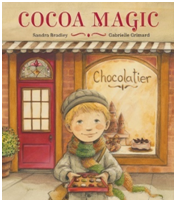
Daniel has been making chocolates alongside his chocolatier Uncle Lewis since he was four years old. Every morning, Daniel spends a blissful hour in the chocolate shop before Uncle Lewis walks him to school, a place that Daniel feels to be cold and lonely. When a new girl named Sarah joins their class, Daniel realizes that school might feel even worse for her. The next morning, he leaves a chocolate in her desk. Finding it, Sarah smiles, as if the chocolate were magic. Daniel looks around and notices that it seems that all his classmates could use a bit of cheer. He begins to leave chocolates for more and more of his peers. The treats seem to brighten everybody's mood. When Uncle Lewis has to go out of town for the World Chocolatiers' Conference, Daniel wonders what will happen without the happiness he leaves in the form of treats from the chocolate shop. Now feeling terrible himself, Daniel opens his own desk to see a pile of treats waiting for him from his classmates. Everyone in the school begins gift-giving to spread this magical cheer so that school is never cold or lonely again. An author's note at the end describes the inspiration for the story. As a clinical social worker, the author has noticed that empathy can be cultivated through the power of a seemingly small act of kindness. Soft illustrations accompany the story well, and the font is clear and legible for children. While some children's books about big topics like empathy miss the mark of a child-friendly vocabulary, this book is well-pitched to reach its intended audience and spark big themes. This could even serve as a good holiday read for young children who might struggle with the joy of gift-giving over merely gift-receiving.
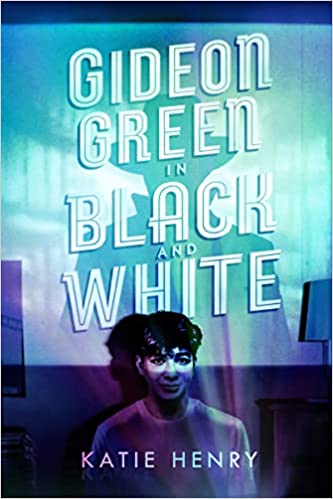
Gone are Gideon Green's glorious elementary school days, when he was the genius boy detective who solved crimes that baffled the police, and fellow students flocked to the detective agency he ran with his best friend, Lily, until she abandoned him in middle school. Now he's just that weird high school kid in a trench coat, eating lunch by himself and hiding in his bedroom watching old detective movies. But then, surprisingly, Lily returns, asking for help with a secret investigative report she's doing for the school paper. Even though he's still angry about her betrayal, Gideon agrees, thinking it will be his chance to remind everyone of his detective greatness. But neither Gideon nor Lily realize how deep the corruption goes nor how dangerous it can get when people's secrets are about to be revealed. Henry, known for laugh-out-loud, character-driven novels, won't disappoint readers with this initial attempt at a mystery. Though readers may occasionally question the ability of completely unsupervised teens (seriously—where is that journalism advisor?) to uncover this level of deception, they'll definitely appreciate the suspense, intrigue, and occasional red herring, all delivered with Henry's signature humor and witty dialogue. She's cast the story with a variety of quirky, mostly well-developed characters, but readers will fall in love with Gideon, who, beneath his cloak of teenage angst and arrogance, carries a sensitive heart and a clever mind that's willing to admit when he hasn't been as clever as he thought. Henry's fans are sure to enjoy this ode to hard-boiled detectives and classic noir films.

Snail loves all things quiet. His favorite kinds of parties have confetti, friends who use indoor voices, and the quiet that comes right before guests yell "Surprise!" Unfortunately, Snail's friends don't understand his love of the quiet and find it odd that he reverts into his shell whenever the environment gets loud. Soon enough, Snail's friends decide to stop inviting him to their parties. Due to this, Snail chooses to throw his own quiet party equipped with warm milk and soft lullabies. He also gathers blankets and pillows to roll up in and relax. Snail is enjoying his party, when all of a sudden, he feels something is missing and wonders if he actually likes the loud. Then, Stump, Snail's friend who also prefers the quiet, offers up the idea that Snail might just be desiring a companion to enjoy his party with. Together, Snail and Stump become party animals as they "shhhellabrate the shhhush" with games of hide-and-seek, their cozy pajamas, and quiet lullabies. In this book, readers see that not everyone likes the same things and that's okay. Hrab's tale promotes inclusivity by creating characters that children who struggle with sensory overload or those who might be more extroverted can relate to. Children learn that while some people might like the loud, others thrive in the quiet, and just because a party is quiet doesn't mean it can't be fun!
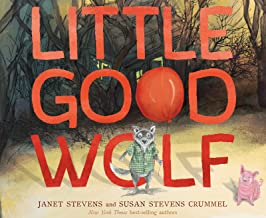
What should you do when you know you were born to be different, but those around you do not see it? Little Good Wolf's family of bad wolves is beginning to think that he needs some extra help. All of their efforts to encourage him to be bad have failed, so they decide to send him to Bad School. Though his teachers there also do not succeed at teaching him how to be bad, he still has fun, is tidy, and is polite. Despite everyone's efforts to change him, Little Good Wolf is still that: good! But when the bus comes to take him home, he is nowhere to be found. He has ventured into the woods, where he meets Old Hag. She nearly convinces him to take the short way out but ultimately fails. He returns home to his parents, who love him so dearly they did good things because of it! In the end, they learn to accept Little Good Wolf for who he is despite their differences. This book plays with popular fairytale conventions to teach a deeply profound lesson. Alternating landscapes, from horizontal to vertical, are sure to hook readers of this story. This book is a perfect read-aloud and a great addition to a classroom or personal library.
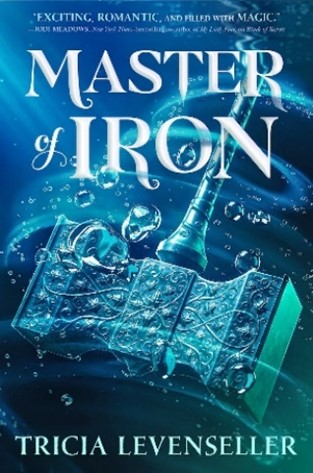
Ziva's sister Temra is unconscious and bleeding, so Ziva and her allies race to the healer, who is the girl's only hope of survival. Upon reaching the city, however, they learn the healer has been kidnapped by an ambitious leader who seeks to overthrow the other districts of Ghadra. Ziva works to rescue the healer but can't conceal her identity as a creator of magicked weapons. Suddenly, Ziva again faces a terrifying choice: craft weapons for her enemies or lose the ones she loves. As Ziva fights for her freedom, she desperately searches for a way to use her gifts without causing more death. With her enemies closing in and her allies in danger, Ziva has no choice but to trust those who've betrayed her as she pursues what seems an impossibility: peace and freedom for her people. Picking up immediately after Blade of Secrets ends, this book begins at a breakneck speed. The stakes grow ever higher as Ziva faces new dangers and difficult choices both around her and inside her own mind. Levenseller draws readers into Ziva's anxious mind, frankly relating her experience and binding thoughts. Readers experience not only Ziva's anxiety but also her brilliance, her loyalty, and her intense love for her sister and the mercenary who's won her heart. All in all, this is a fast-paced, emotionally deep conclusion to a wonderful duology. Recommended.
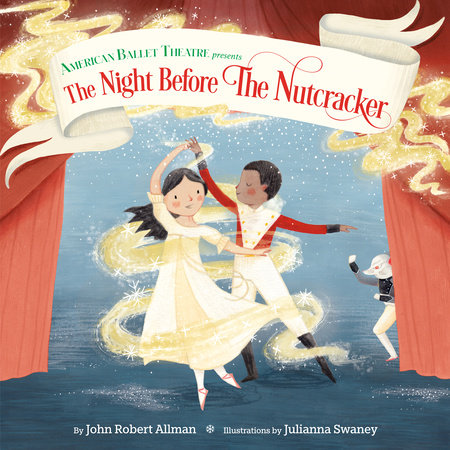
Leaping its way through preparations for a performance of the Nutcracker ballet, this fiction book provides children with a sparkling introduction to the story of "The Nutcracker" through the eyes of cast members. A delectable confection combining sweet words and illustrations, it is peopled with diverse characters supporting each other in their creativity, working together to put on a show that will delight audiences. Just as they do in the Nutcracker ballet itself, all of the mechanics of this story cohere splendidly. There is always something new to notice in the expressive drawings, which use sweeping lines to create movement mirroring the graceful postures of the ballet dancers. A plethora of colorful patterns conveys texture, creating visual interest that will captivate young readers. Interesting use of perspectives brings readers into all of the theater's angles, adding to the feeling that the reader is there, experiencing the excitement of opening night. Complementing the lively energy of the illustrations is the text's lilting rhyme scheme. Children will enjoy the rich alliterative language peppered with descriptive vocabulary words, including ballet terms. Ideal for teaching pre-kindergarten and lower-elementary school students about the arts, especially during the holiday season, the book nurtures a love for dance in boys and girls. Readers learn about the details of staging a production, from music and lighting to costumes and choreography. Including real-life costume designs from a professional with factual information about the ballet, the book would lend itself well to a culminating project, serving as a model to students of how they can collectively contribute their talents to creating a work of art. The wonder of being an artist is captured as readers watch child performers rehearse, polish their skills, and realize the rewards of their hard work at the finale: the joy of making others happy.

This stunning new picture book tells the story of dam removal from the Elwha River in Washington state. While nonfiction, this book reads as a story, telling the history of the river. Until 1790, the Elwha River nourished the land. The river is a life force for all flora and fauna. The Lower Elwha Kllalam Tribe, also known as The Strong People, depends on the river and provides not only food but is the creation site of their people. In 1790, white settlers came to the area and took over the land. Looking to create towns, they built dams on the Elwha to provide people with electricity, but not the Strong People. This created huge problems, especially for the salmon, which stopped coming. The Strong People fought for years to have the dams removed and finally won. Scientists worked together to ensure the dam removal would help the environment in the best way possible. No one knew if the river would return fully to nourish the land. Then, five months after dam removal, the first salmon returned. This book is an absolute must for any classroom or library, especially those in the Pacific Northwest. Riddled with rich information, teachers can use this resource in specific content areas. The book contains embedded vocabulary and definitions in the artwork. The language is elevated yet readable. The artwork, done by a Metis Tribal member, is gorgeous and enhances the writing perfectly. The book also contains diagrams woven into pages that explain the science of the river and the culture of The Strong People. Every detail in the book is attentive to the storytelling, including the inside cover map art, comparing the river in 1950 and 2020. This book is an absolute gem and should not be missed.

Coming to terms with World War II's emotional wounds, 14-year-olds Nellie and Tamiko must learn to forgive, rebuilding their communities by choosing peace. While Nellie resides in rural Oregon and Tamiko in Japan, this historical fiction book, told in alternating chapters, offers dual perspectives demonstrating that the two girls, whose countries are at war with each other, have much in common, each striving to do what is right. Universal human suffering and shared grief are captured poignantly in this poetic, thoughtful novel set from 1944-45, exploring how the changes wrought in both lives have a wider ripple effect. Telling the little-known history of Project Fugo, in which Japan's military called forth girls like Tamiko to help build balloons that would carry bombs to the U.S. Pacific coast, Vernick addresses weighty topics compellingly, weaving a narrative that is as captivating and richly symbolic as the sky bright with stars that Nellie looks to when feeling lost. Both Nellie and Tamiko grapple with missing loved ones, adapting to transformed networks of family and friends as they find their place in the constellations of people around them, redefining their values, what is truly right versus wrong, and who they will be in a war-torn world telling them what to believe. This complex book exploring justice, culpability, and trauma is an excellent choice for secondary school ethics discussions applicable to present times. Background information about true events inspiring the story rounds out the book, which immerses readers in an empathetic, relatable narrative promoting dialogue, understanding, and honesty in a manner that will engross teen readers with its convincing voice. Though tragedy teaches the characters one choice's impact, so, too, does their process of picking up the pieces, discovering inner healing that branches outward, aiming at peace for not only one nation but all.

Best friends Stick and Stone seem to find adventure wherever they go. In this book, there are two unique stories that showcase the two companions in two adventurous circumstances. The first story features a young girl who is collecting items from around the forest that start with each letter of the alphabet; as she gets closer to the letter S, Stick and Stone watch in horror as friends of theirs are scooped up and added to the girl's basket—and then it is their turn! The second story focuses on Stick and Stone on their own, and they make a wish on a dandelion. Instead of ice cream like Stone wants, the two companions find themselves on another exciting and unexpected adventure. This delightful graphic novel focuses on friends Stick and Stone in silly and enjoyable circumstances and will appeal greatly to fans of other stories in the Stick and Stone canon. Colorful and expressive illustrations depict the two friends in their natural habitat, and word bubbles enhance the visuals to create a story that is highly accessible in design. While this book is appealing to young readers in its appearance, the text itself includes a variety of puns and humor that may be lost on small children. Older children and adults will enjoy the playful banter shared between Stick and Stone, especially as they attempt to determine whether they would rather share a treat or an adventure. At the end of the book, readers will find a recipe for s'mores done three different ways, inviting children to make the scrumptious treat no matter where they find themselves. This is a sweet and heartfelt graphic novel that is an excellent addition to library collections for young children.

The early bird catches the warm! And what happens to the late bird? In this comical young readers' book, three tired and lazy bird friends defy the instinct of migration when the seasons start to change. Left behind, they are forced to come up with creative ways to survive the cold, wind, rain, and snow. This proves to be an arduous task, as the settings for these innovative ideas are not ideal for a bunch of birds in the winter. The three birdie friends find themselves in ridiculous situations, leading them to suffer from freezing conditions, icy waters, boredom, and hunger. Eventually they are forced to migrate, despite their firm desire to stay put. But as this poignantly funny story would have it, the three comical and absurd friends arrive too late to their warm destination, which is now welcoming in the colder seasons. A creative, humorous, and witty story, it wonderfully combines a natural phenomenon with cuteness and silliness. The three birdie friends make this story a wonderful and joyful read, a circular narrative on the pitfalls of procrastination. With its various lessons, young readers will learn that getting somewhere on time is of the essence and that following your natural instinct is always a must! Cunill's delightful dialogue-rich story is easy to follow, making the reading a positive experience for adults and children alike. The illustrations are pleasant to look at, as they have a great balance of warm and neutral colors, are expressive and full of movement, and artfully convey diverse characters, in a style that is reminiscent of Nicoletta Costa. This is definitely a book to have and one that will foster creativity, joy, and life lessons. Don't wait to pick this one up!
★ ChildrensLit Now Newsletter Survey Results- A big thank you to all the ChildrensLit Now subscribers who completed our recent survey. As we move into 2023, we will implement some of your newsletter suggestions and provide more of the current information you love. We will continue to share notable reviews of recently published books and will also include a mix of articles from ChildrensLit reviewers, author/illustrator interviews, and topical or seasonal booklists. Many of you requested that the latest newsletters arrive in your inbox on a Monday or Tuesday. Our goal is to send the newsletters on a Tuesday every month. We are looking at ways to fulfill other suggestions as well. 2023 looks to be a great year for children's and YA readers!
★ Want to read more Children's Literature reviews? Each month, Children's Literature reviews hundreds of books. We spotlight different reviews on different online platforms- our website, www.childrenslit.com, and our social media pages (Facebook and Twitter). All Children's Literature reviews, past and present, are housed in the Children's Literature Comprehensive Database (CLCD), www.clcd.com.